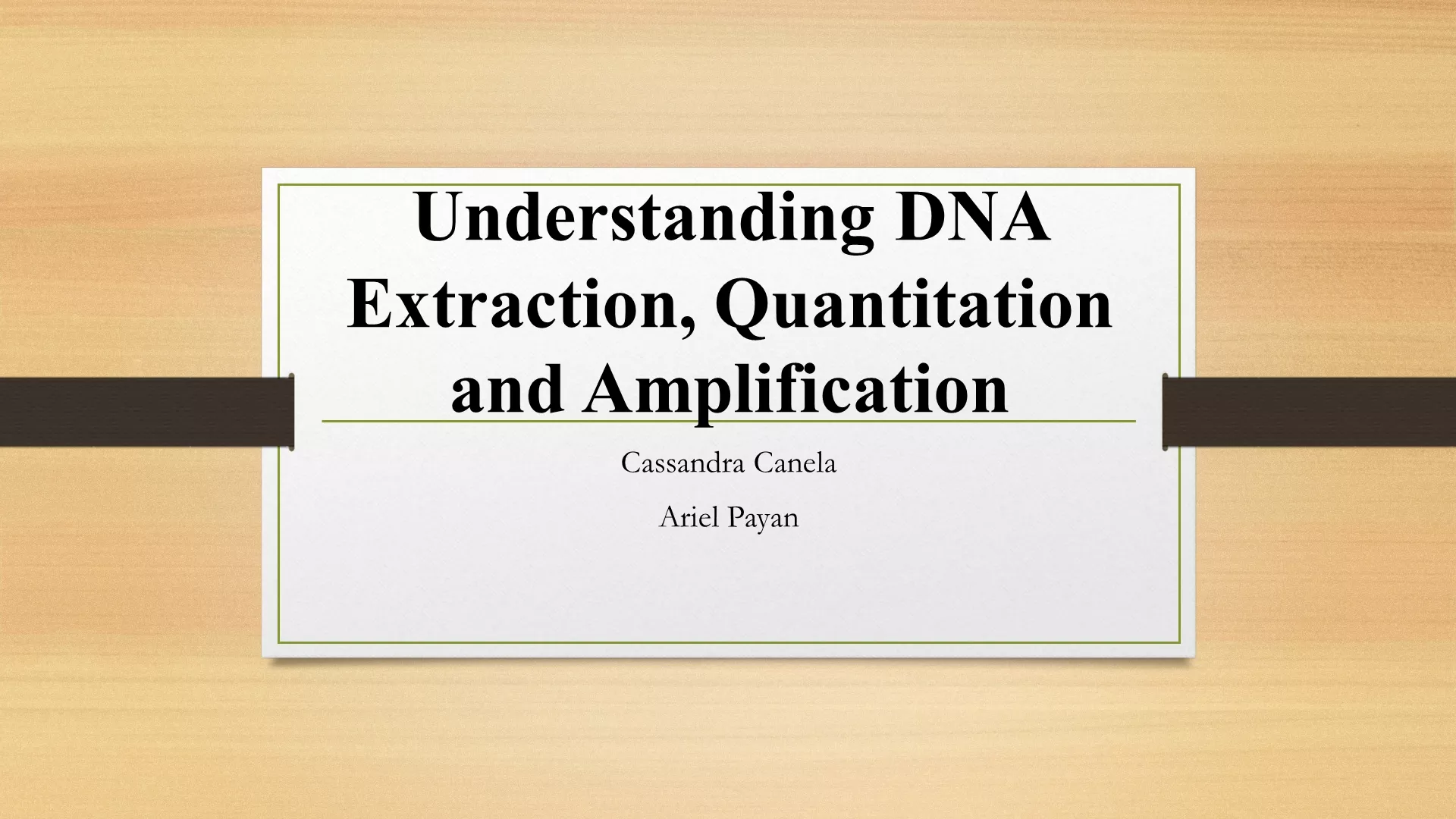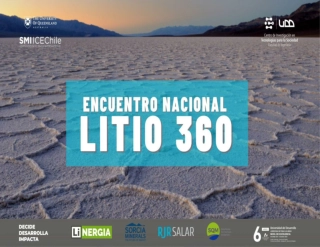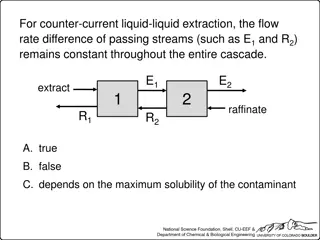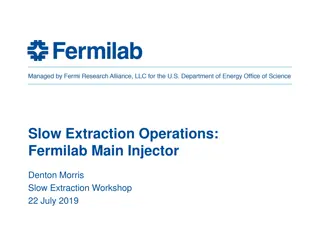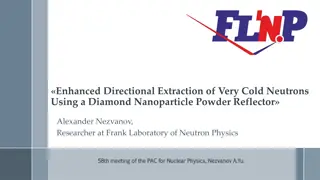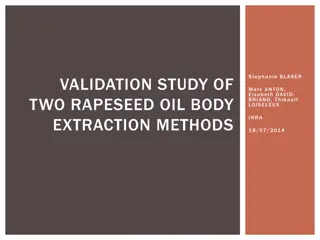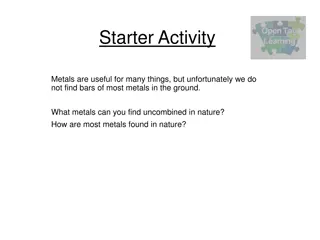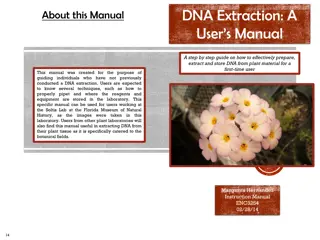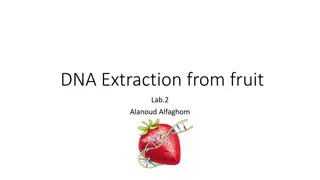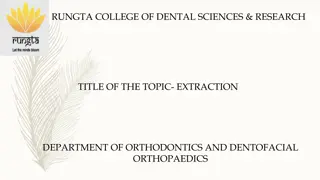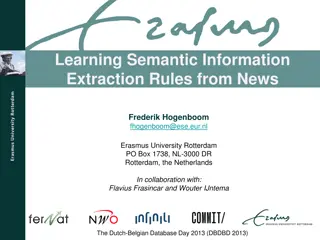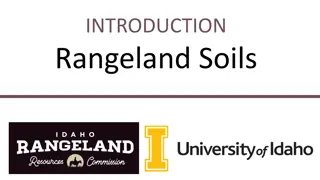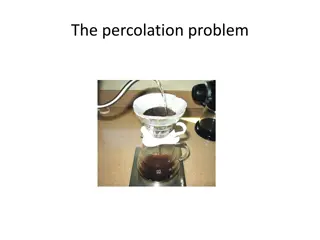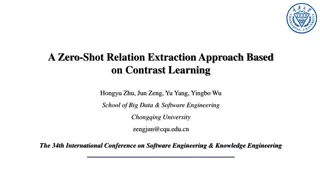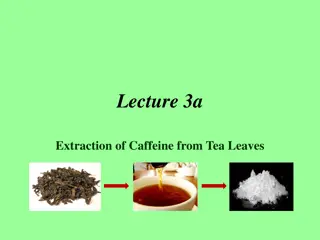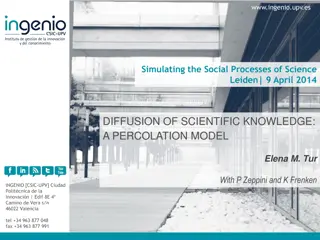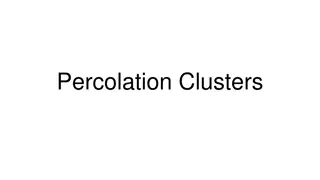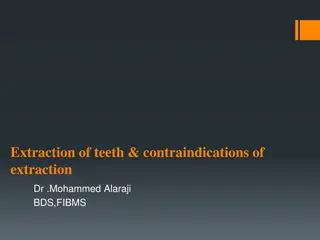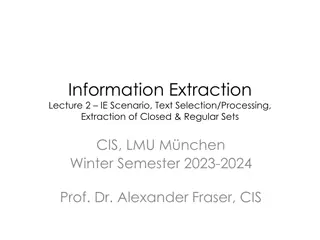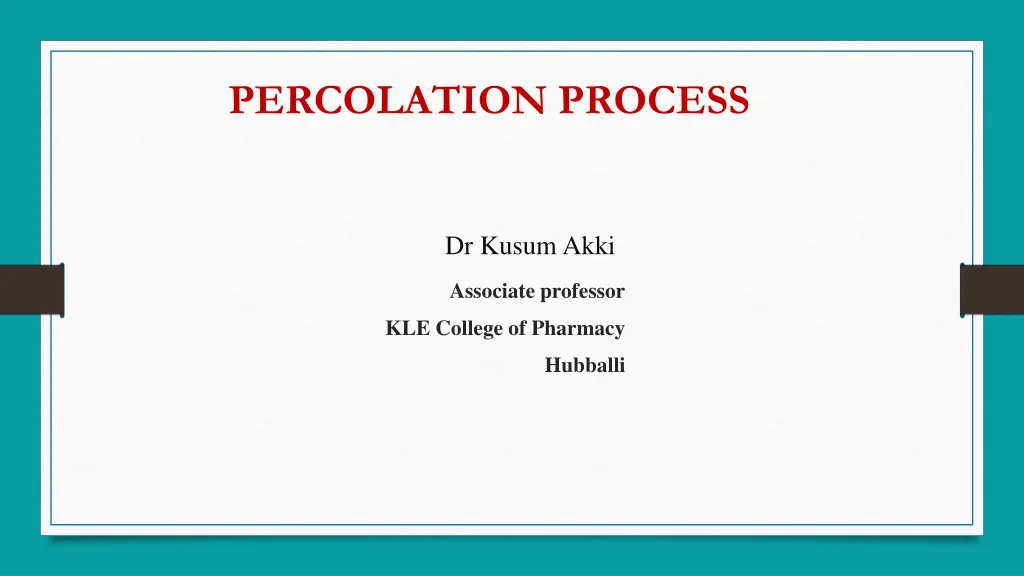
Percolation Processes in Drug Extraction
"Learn about the different percolation processes used for drug extraction, such as simple percolation and continuous hot percolation. Explore the stages involved, including imbibition, maceration, and percolation methods. Discover various types of percolators and steps in the percolation process for efficient tincture preparation."
Download Presentation

Please find below an Image/Link to download the presentation.
The content on the website is provided AS IS for your information and personal use only. It may not be sold, licensed, or shared on other websites without obtaining consent from the author. If you encounter any issues during the download, it is possible that the publisher has removed the file from their server.
You are allowed to download the files provided on this website for personal or commercial use, subject to the condition that they are used lawfully. All files are the property of their respective owners.
The content on the website is provided AS IS for your information and personal use only. It may not be sold, licensed, or shared on other websites without obtaining consent from the author.
E N D
Presentation Transcript
PERCOLATION PROCESS Dr Kusum Akki Associate professor KLE College of Pharmacy Hubballi
Percolation Processes The various percolation processes used for the extraction of drugs are: 1. Simple percolation or petroleum process for tinctures. 2. Percolation processes for concentrated preparation :Reserve percolation process 3. Continuous hot percolation or soxhelation
Simple percolation Three types of percolators are used. 1. Conical Percolators: The percolator is made of glass or of metal .It is conical in shape . 2.Cylindrical Percolaters: The percolator is cylindrical in shape i.e. Upper and lower diameters are same. When a higher concentration of alcohol or any other volatile solvent is used as menstruum a cylindrical percolator is preferred. 3. Steam jacketed percolator: When percolation is carried a higher temperature ,in order to increase the solvent action of the menstruum, the percolator is heated by steam.
METHOD Simple percolation process is used for the preparation of tincture. There are three stages in the official method for the preparation of tincture : A) Imbibition B) Maceration C) Percolation A) Imbibition : The powdered drug is moistened with sufficient quantity of menstruum and allowed to stand for 4 hrs in closed vessel. Pack the moistened drug into percolators & add sufficient quantity of menstruum to saturate the material. When liquid starts coming out from outlet of percolators, the outlet is closed. Then the sufficient quantity of menstruum is added in order to leave a layer above the drug.
B) Maceration : The moistened drug is left in contact with menstruum for 24 hrs. During this period ,the menstruum dissolves the active constituents of the drug and becomes almost saturated with it. C) Percolation: It consist of downward displacement of saturated solution formed in maceration and extraction of the remaining active constituents present in the drug by slow passage of the menstruum through the column of the drug . After collecting of the required volume of the finished product or when drug is completely exhausted, the marc is pressed. Mix the expressed liquid with percolate. Add sufficient quantity of menstruum to produce required volume and then filter.
Steps in percolation 1. Size reduction: The drug to be extracted is subjected to suitable degree of size reduction, usually from coarse powder to fine powder. Imbibition: During imbibition the powdered drug is moistened with a suitable amount of menstruum and allowed to stand for four hours in a well closed container. Packing: After imbibition the moistened drug is evenly packed into the percolator. Maceration: After packing sufficient menstruum is added to saturate the material. The percolator is allowed to stand for 24 hours to macerate the drug. Percolation: The lower tap is opened and liquid collected therein is allowed to drip slowly at a controlled rate until 3/4th volume of the finished product is obtained. 2. 3. 4. 5.
RESERVE PERCOLATION PROCESS In this process, a part of the percolate, generally 3/4th the volume of the finished preparation, is reserved. Then the percolation process is continued till the drug is completely exhausted. Then the percolate is subjected evaporation or distillation to convert it into a soft extract. This soft extract is dissolved in the reserve portion of the percolate & then sufficient menstruum is added to produce the required volume.
CONTINUOUS HOT PERCOLATION OR SOXHELATION SOXHLET APPARATUS A Soxhlet extractor is lab equipment designed for processing certain kinds of solids. These devices allow for continuous treatment of a sample with a solvent over a period of hours or days to extract compounds of interest. Typically, a Soxhlet extraction is only required where the desired compound has a limited solubility in a solvent, and the impurity is insoluble in that solvent. It was invented in 1879 by a scientist named Franz von Soxhlet. It was first invented for the quantification of fat in the milk. Then it has been frequently used for the extraction of lipids in agricultural chemistry.
https://www.researchgate.net/publication/25 1753895_Solvothermal_removal_of_the_org anic_template_from_L_3_sponge_templated _silica_monoliths
Soxhlet extraction unit is a fully automated system, based on soxhlet apparatus for fast extraction of soluble matter from a wide range of matrices Advantages: The material is extracted continuously, i.e., the solvent saturated in solubilized metabolites empties into the flask, fresh recondensed solvent then re-extracts the material in the thimble. Disadvantages: Physical character of the drug Solvents Chemical constituents of the drug

